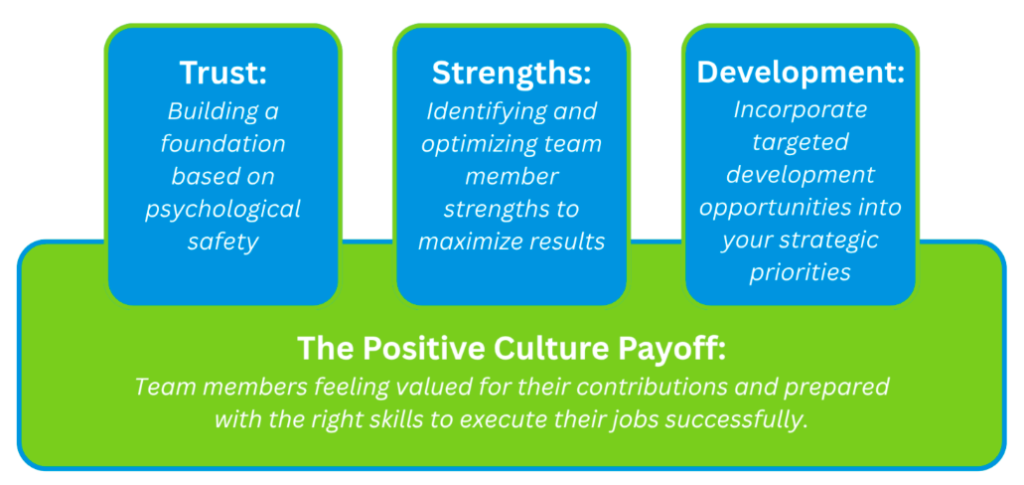As the year winds down, every organization is focused on finalizing strategic priorities for the new year. But strategy is just a blueprint; execution is the build. Here at Plaid, we believe the best way to execute is by helping individuals and organizations Be. Better.
My career has been dedicated to this exact challenge. Over a decade, I’ve worked across corporate, non-profit, higher education, and financial services, operating at the intersection of training, project management, and organizational development. I’ve seen firsthand that my passion for helping people and organizations grow through effective learning and process improvement is based on a single, universal truth: The intentional development of your people is not simply an overhead line item; it’s the most critical driver of your strategic success. Whether you’re forming a new engineering team, building a student leadership cohort, or training a board of directors, the core needs for a high-impact team remain the same.
Let’s look at three pillars that should be non-negotiable investments for any organization looking to maximize its return on its most valuable asset—its people.

Starting with Trust
Before your team can reach for innovation or mastery, they need to feel secure. Think of it as a psychological hierarchy of needs in the workplace. At the base of that pyramid is trust. Trust is the essential psychological safety that allows for genuine risk-taking and open communication. I’ve personally learned that you can’t ask a colleague to step into a challenging new project unless they trust that their leader and teammates support their efforts. For example, since rejoining the Plaid team, I was immediately tasked with bringing our new suite of Compliance Signature Programs to life in a short amount of time. My leaders valued my corporate training experience, acknowledged my instructional design expertise, and trusted me to manage this project from inception through implementation. Through a shared and respected culture of trust, I am able to trust my teammates to achieve their parts of the project successfully as well.
As a leader or teammate, you build trust through transparency and ensuring your actions align with your words by modeling the expectations you communicate. By giving your team members true ownership and autonomy over their work, you signal that you trust their judgment, which is the single biggest motivator for them to deliver.
This need for foundational trust is universal: it’s what allows a new student leader in a fraternity or sorority to voice concerns about chapter culture, and it’s what allows a client to trust Plaid’s security and reliability with their organizational data.
Optimizing Unique Strengths
A high-performing team is rarely a group of identical individuals. It’s a robust blend of diverse personalities, backgrounds, experiences, and generations. If you’re looking for peak performance, you have to move beyond just celebrating diversity and actually optimizing it. Over the years, I’ve found that the richest learning and best solutions emerge when you collaborate with others whose approach and perspectives differ from your own.
This is why we’re so passionate about leveraging tools like the Birkman Method and other personality assessments in our client programming at Plaid. These instruments help teams identify and understand those subtle differences in how members prefer to communicate, contribute ideas, and even operate under stress. In higher education, for example, optimizing means balancing the deep operational knowledge of a tenured faculty member with the fresh, tech-forward perspective of a new graduate. In any sector, by leaning into these insights, you can ensure you’re placing every person where they can maximize their unique contribution, helping the entire team Be. Better.
In my past corporate training experience, this looked like pairing a new hire who is just starting their career with a tenured veteran in the same department during the new hire’s onboarding period. The veteran is able to offer invaluable historical context to the how and why the company or products operate, while the new hire is able to view their surroundings with a fresh perspective and offer innovative ideas. Both perspectives are important and when optimized lead to outstanding results.
Making Development a Strategic Approach
For too long, onboarding and training have been treated as administrative tasks, a checklist to complete. If you want a real return on investment, you must elevate them to a strategic initiative. Effective onboarding must immediately connect the team member’s role directly to the organization’s highest priorities. It’s not enough to teach what to do; you must explain why it matters to the mission.
In practice, I encourage you to start by assessing your current onboarding process. Do you facilitate an initial new employee or member orientation session? Does that orientation content, include time for reviewing the mission, vision, and values of the organization as well as its current strategic priorities? If so, are you able to lead discussions on how their role fits within the organization and will help achieve those goals? If not, how can you adapt to accomplish these items.
Similarly, training shouldn’t be generalized compliance; it must be intentional, targeted development that addresses a specific organizational goal. If a fraternity or sorority needs to improve member engagement, providing targeted training on conflict resolution and persuasive communication is a strategic step. If your non-profit aims to diversify its funding, targeted training in corporate partnership cultivation should be a top budget item. I’ve seen in every sector that this intentional development is the shortest, most efficient path between an organizational goal and the team’s ability to execute it.
The Positive Culture Payoff
When you invest in these three pillars (Trust, Optimization, and Intentional Development) the cumulative result is a positive and resilient culture. This culture is not about the snacks in the kitchen; it is simply how work gets done. A positive culture is one where people feel valued for their contributions, are prepared with the right skills to execute their jobs and are safe to learn from mistakes.
This cycle of trust, optimization, and intentional development is the hidden engine of execution, helping your organization Be. Better. For our corporate clients, this translates directly to lower attrition and higher rates of innovation. For non-profits, it means better volunteer retention and deeper community impact. In the world of higher education, a positive culture drives student success and institutional resilience. This focus on people is what ultimately builds a powerful, high-impact engine for your organization.
Investing in Your Future
The challenges facing every sector today are complex and constantly shifting, but the path to execution always starts and ends with your people. As you look to prioritize next steps this December and beyond, focus your investment on these three areas: prioritize trust at the foundation, value and optimize every unique contribution, and use development as a core strategic lever. When you commit to the human element, you don’t just build a team; you build an organization capable of delivering on any strategic vision.

